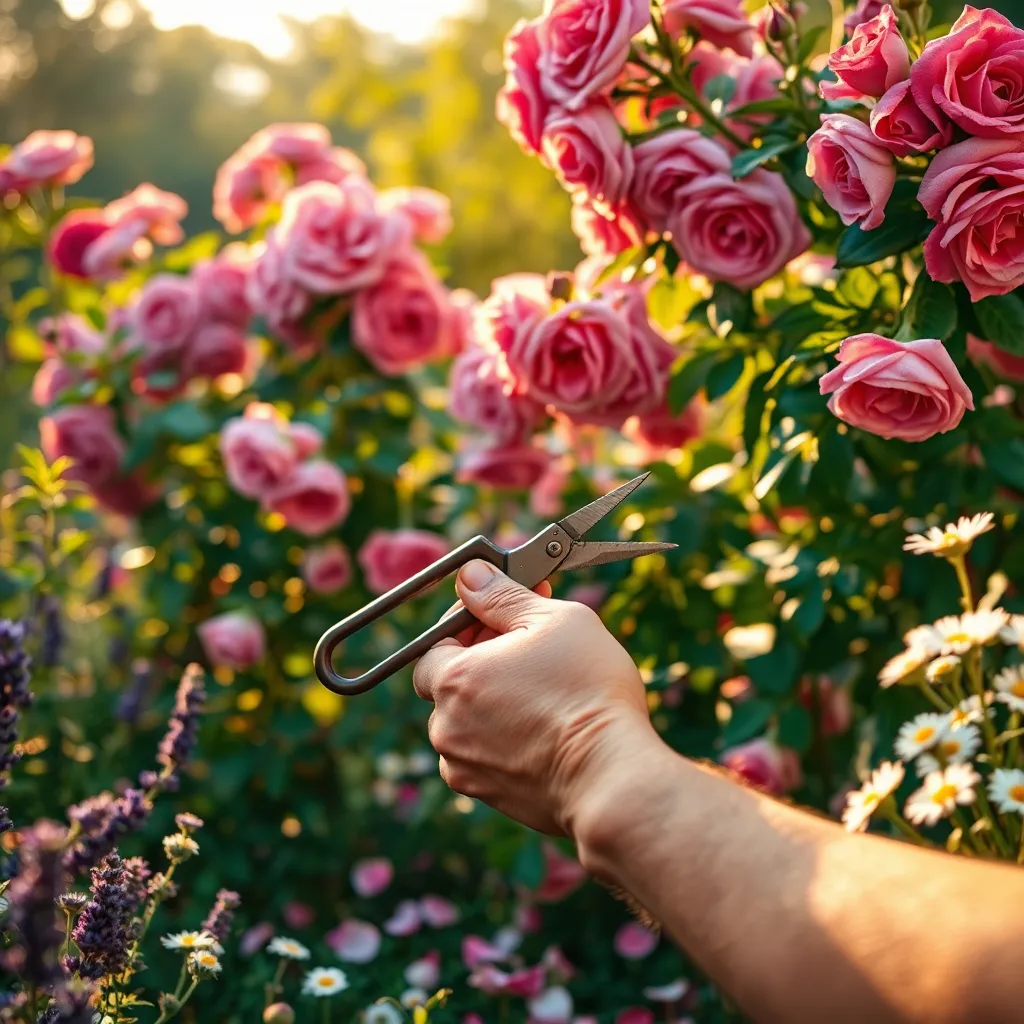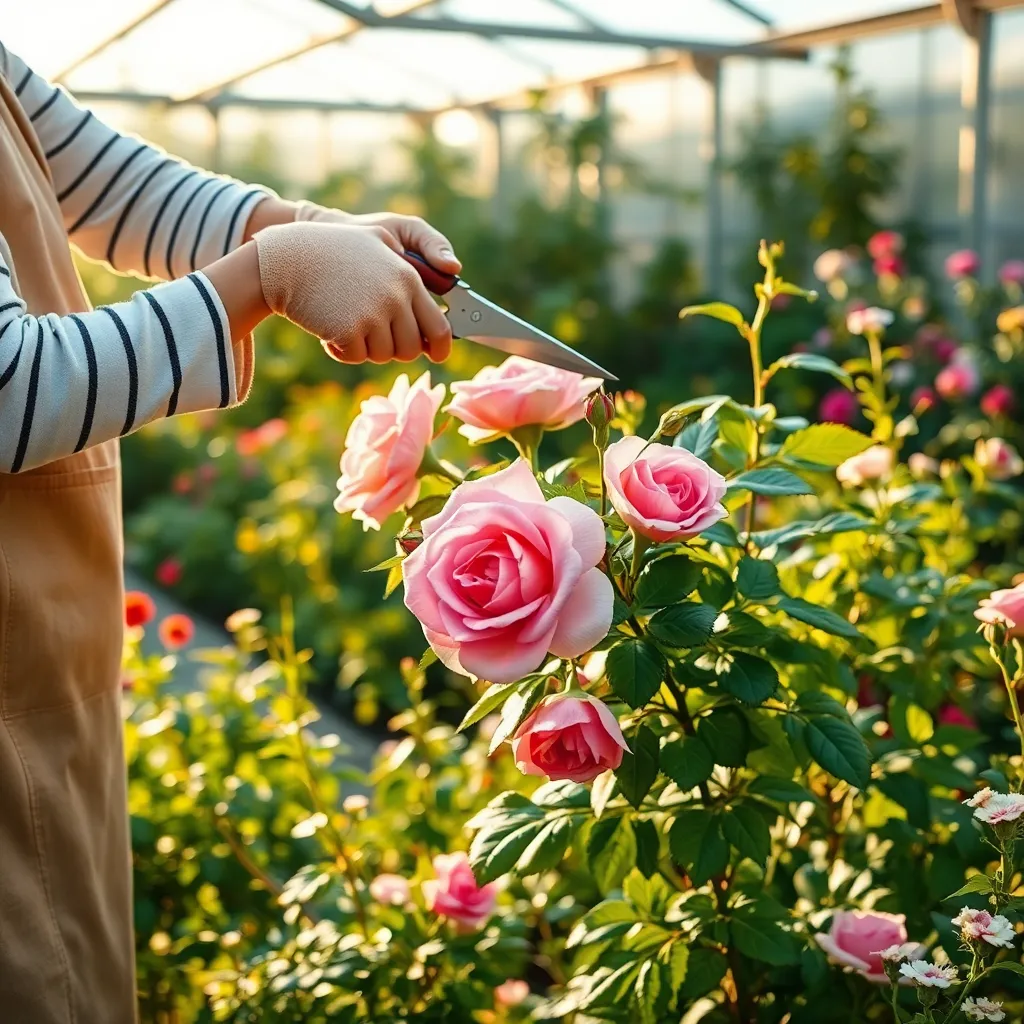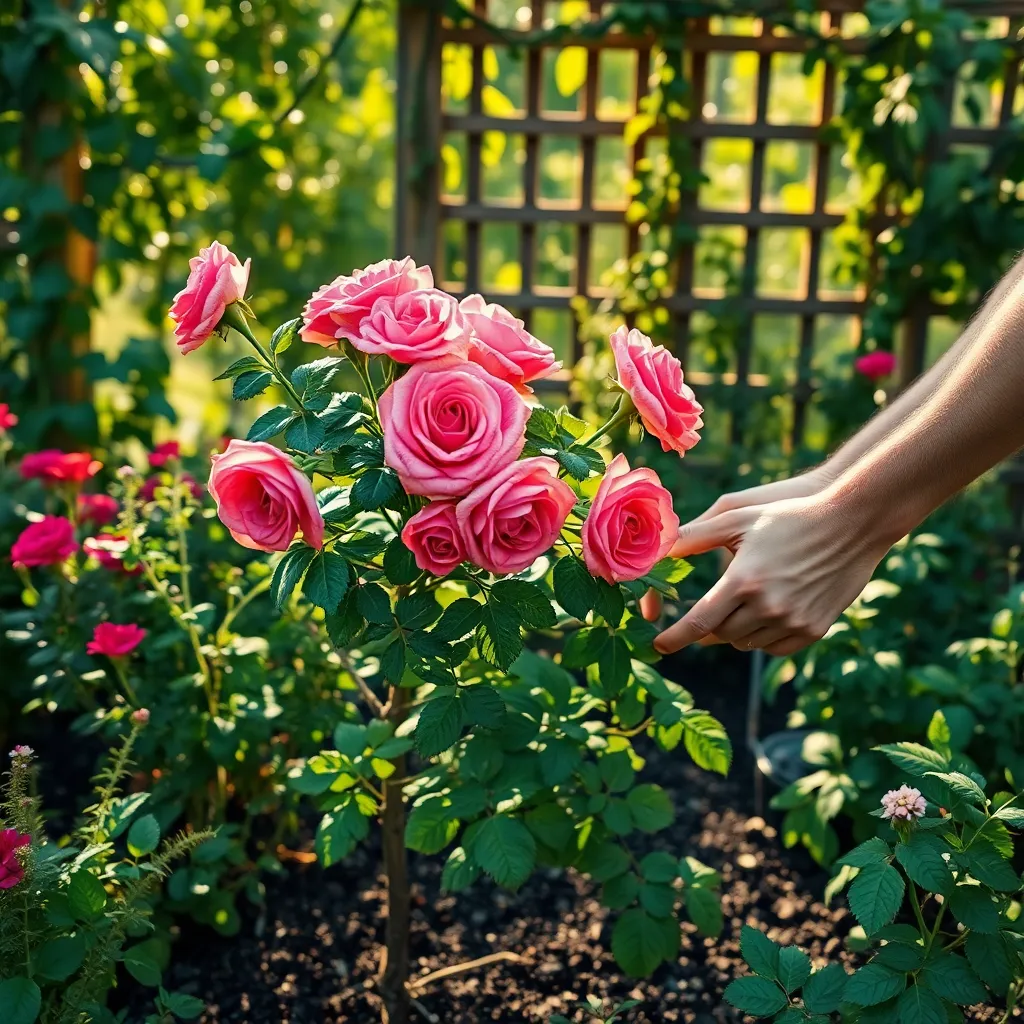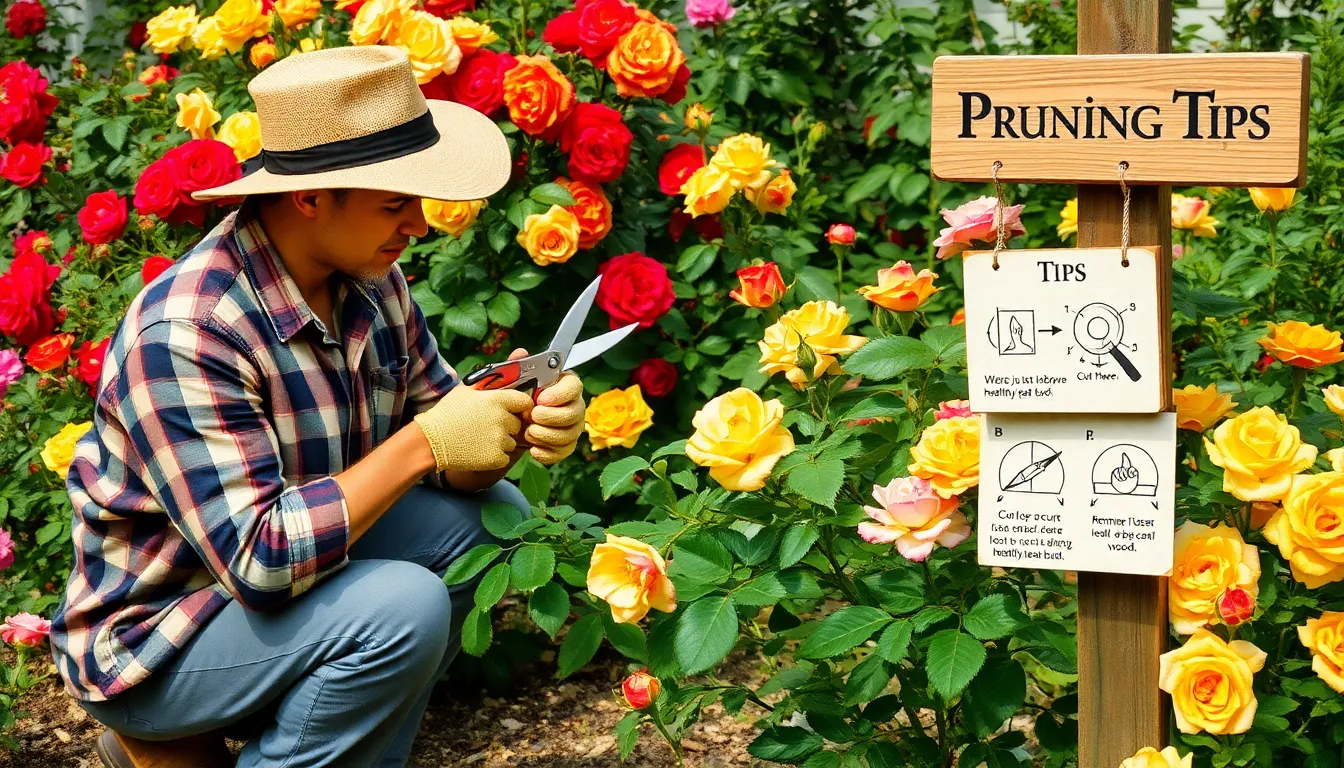Pruning rose bushes can transform your garden into a paradise of blooms, opening the door to a world where the vibrant colors and sweet scents of roses reign supreme. Whether you’re just getting your hands dirty or you’ve been nurturing your garden for years, this guide is your ticket to mastering the art of rose care, ensuring your plants thrive and dazzle with every season.
For the passionate gardener, roses represent the pinnacle of beauty and challenge, and this guide is crafted to help you embrace both with ease. By learning the essential techniques of pruning, you’ll unlock the secrets to healthier plants, more abundant blooms, and a garden that will be the envy of the neighborhood. Dive into these tips, and feel confident that your efforts will not only beautify your garden but also bring the unparalleled joy of watching your roses flourish.
Cut Back Dead Wood

Removing dead wood from rose bushes is essential for maintaining plant health and encouraging new growth. Start by identifying and cutting back any branches that appear brown, dry, and brittle, as these are no longer contributing to the plant’s vitality.
Use clean, sharp pruning shears to ensure a precise cut, which helps the plant heal more efficiently. Make your cuts at a 45-degree angle just above an outward-facing bud to promote optimal growth direction.
For gardeners in wetter climates, removing dead wood is particularly important to prevent fungal diseases that thrive in decaying material. If you’re dealing with a particularly dense bush, consider thinning out some of the older wood to improve air circulation.
Be mindful of the timing of your pruning efforts; late winter or early spring is generally the best time for most climates. By tackling this task before the growing season kicks in, you set the stage for a healthier, more vigorous rose bush.
- Check for dead wood regularly throughout the growing season to keep your roses in top shape.
- Dispose of removed wood properly to prevent the spread of disease.
- Consider using a sealant on larger cuts in humid regions to protect against pests and disease.
Trim for Air Circulation

Proper pruning for air circulation is crucial to ensuring your rose bushes thrive. By trimming excess growth, you can prevent disease and promote healthy development.
Begin by identifying branches that are growing inward or crossing each other. These should be removed to open up the center of the bush and allow for better airflow.
Using clean, sharp pruning shears, cut back any dense or tangled growth. Aim to shape the bush into a vase-like form, which encourages air movement through the center.
For advanced gardeners, consider thinning out the canopy to further enhance air circulation. Remove weaker shoots and leave the more robust canes to support the plant and maximize flowering.
Regularly inspect your rose bushes throughout the growing season to maintain good airflow. This practice, combined with proper watering and feeding, will help your roses flourish beautifully.
Shape for Balanced Growth

To promote balanced growth in your rose bushes, it is essential to maintain a well-shaped structure. Begin by identifying the main canes of your rose bush and prune them to encourage an open, vase-like shape. This ensures sunlight reaches all parts of the plant, fostering even growth and preventing disease. Additionally, remove any wayward or crossing branches that could rub against each other and cause damage.
While shaping, focus on maintaining a consistent height across the bush to promote symmetry. This not only enhances the aesthetic appeal but also ensures that energy is distributed evenly throughout the plant. For beginners, a good rule of thumb is to prune back the plant by about one-third in the early spring, just before new growth starts. This helps control size and encourages a strong framework for the upcoming blooming season.
Advanced gardeners can fine-tune the shape by thinning out older, less productive canes. Aim to keep only the healthiest canes, removing any that are over three years old as they typically produce fewer flowers. Use sharp, clean pruning shears to make cuts at a 45-degree angle, just above outward-facing buds. This technique encourages new growth to extend outward, maintaining the open shape and preventing crowding in the center.
It’s crucial to regularly assess the shape of your rose bushes throughout the growing season. Make minor adjustments as needed by removing any new growth that disrupts the overall balance. For optimal results, ensure your roses are planted in well-draining soil, such as a loamy mix, and water them deeply once a week. Consistent care and shaping will lead to a healthier, more vibrant rose bush that is both beautiful and resilient.
Remove Crossing Branches

When pruning rose bushes, it’s essential to remove crossing branches to promote healthy growth. Crossing branches can rub against each other, causing damage and opening the plant to disease.
Begin by identifying any branches that intersect or grow towards the center of the bush. Use clean, sharp pruners to make a cut just above an outward-facing bud, ensuring you remove the entire crossing branch.
Targeting these branches will improve air circulation, which is crucial for reducing fungal diseases. Open the center of the plant by removing these branches, allowing sunlight to penetrate to the base, encouraging more vigorous blooms.
For beginners, it’s important to remember that less is more; only remove the branches that clearly cross each other. Experienced gardeners can take this a step further by considering the overall symmetry and balance of the bush during pruning.
After removing crossing branches, be sure to discard the cuttings away from the garden area to prevent any potential spread of disease. Regularly checking your rose bushes throughout the growing season for new crossing branches ensures ongoing plant health and vitality.
Prune After Blooming Period

After the blooming period, it’s essential to prune your rose bushes to encourage new growth and maintain their shape. This timing allows the plant to focus energy on developing strong branches and vibrant blooms for the next season.
Begin by identifying spent blooms and cutting them back to the first set of healthy leaves. This practice, known as deadheading, prevents the plant from expending energy on seed production and instead directs it toward growth and development.
Ensure your cuts are made at a slight angle above an outward-facing bud. This technique helps direct new growth outward, promoting a more open structure that improves air circulation, reducing the risk of fungal diseases.
For more experienced gardeners, consider thinning out older canes to rejuvenate the plant. By removing a few of the oldest canes, you can encourage the growth of new, vigorous shoots that will support more substantial blooms in the coming season.
Conclusion: Growing Success with These Plants
In nurturing a thriving relationship, much like tending to a rose bush, the key lies in deliberate care and thoughtful actions. This article explored five essential concepts: maintaining open communication to foster understanding, prioritizing quality time to strengthen bonds, setting healthy boundaries to respect individuality, practicing forgiveness to heal and grow, and expressing appreciation to deepen connection. These principles serve as the foundation for a resilient and flourishing partnership.
As an immediate step, choose one of these concepts to focus on today, whether it’s sharing a heartfelt conversation or planning a special moment together. These small, intentional actions can spark profound positive changes.
Remember, every relationship requires ongoing care and attention. Save or bookmark this article as a handy guide for nurturing your relationship, ensuring you have these valuable insights at your fingertips.
Looking ahead, by embracing these practices, you’re paving the way for a successful and fulfilling relationship. Let this be a reminder that with dedication and love, your relationship can blossom beautifully. Empower yourself to take action today and watch your connection grow stronger, knowing that these insights are always here to support your journey.


